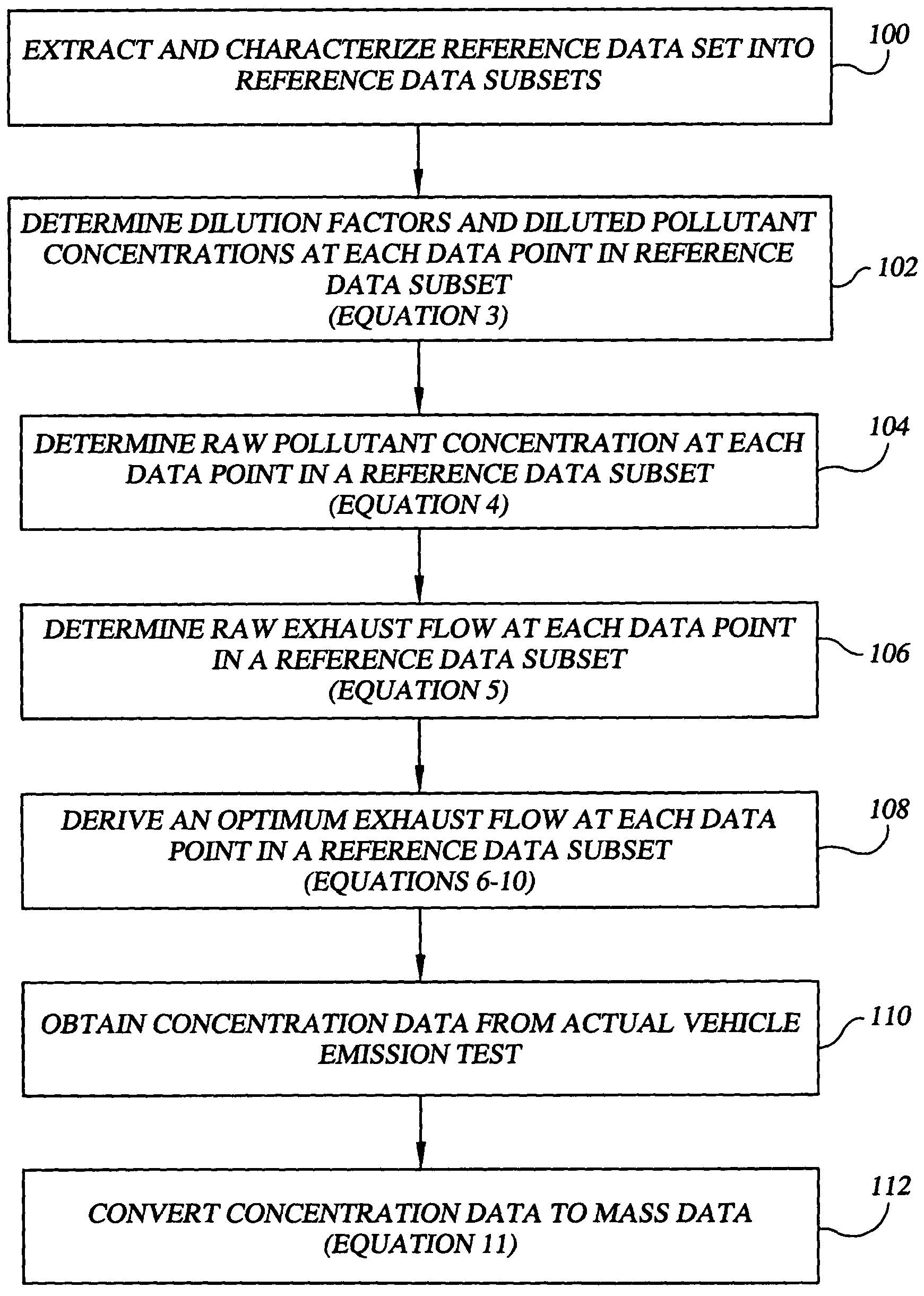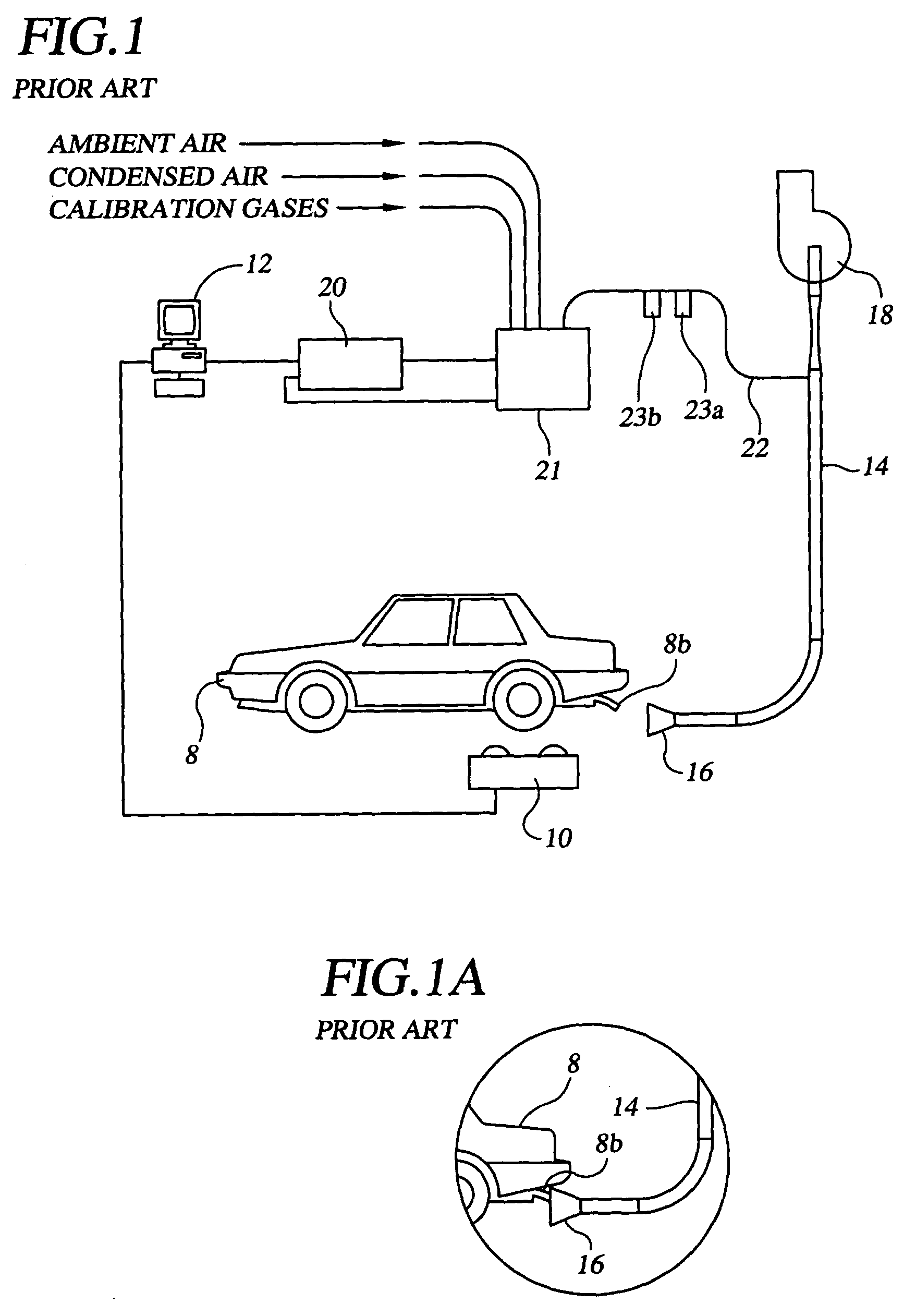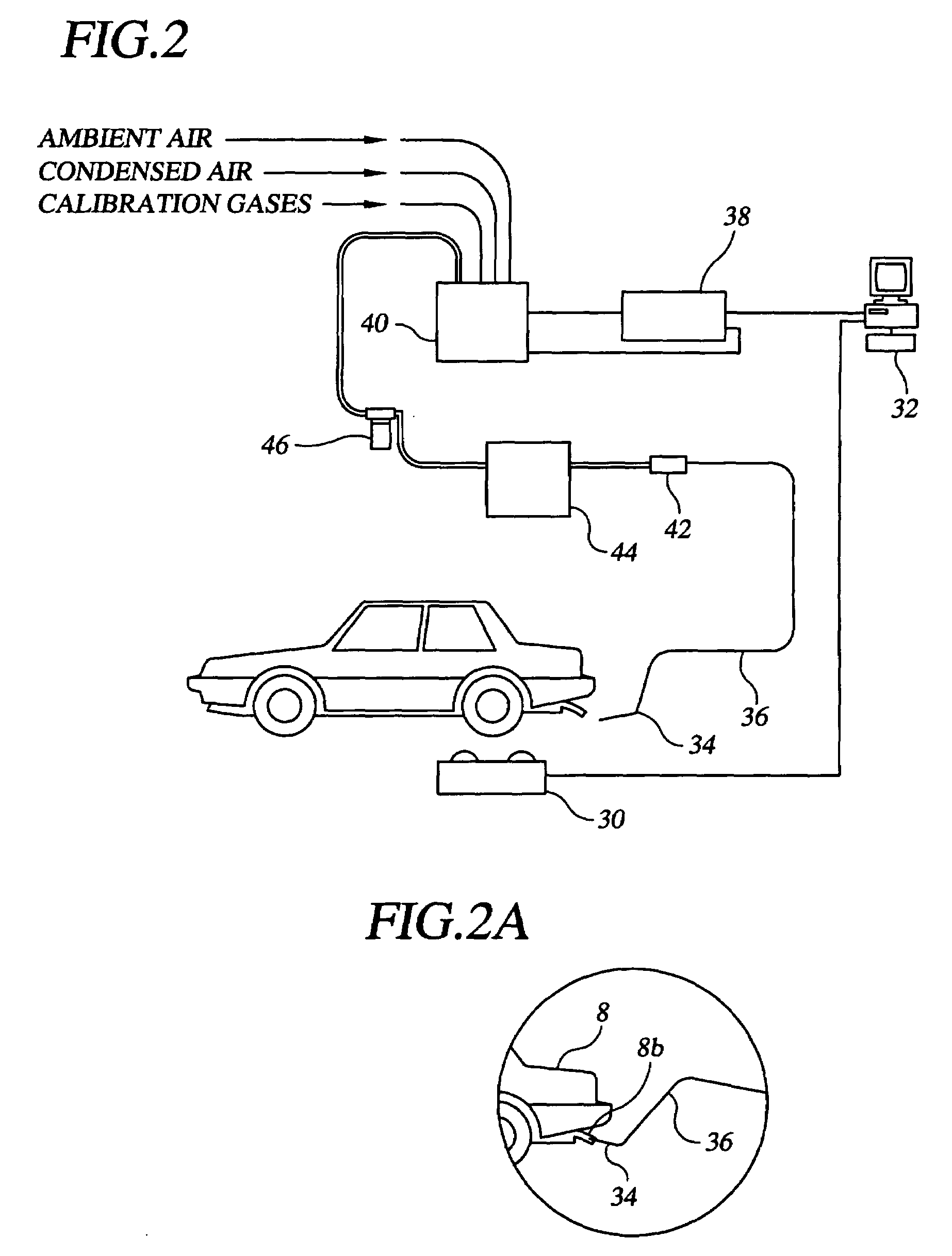Method and system for vehicle emission testing
a technology for vehicle emission testing and methods, applied in chemical methods analysis, liquid/fluent solid measurement, instruments, etc., can solve the problems of not representative of “real world” driving, different amount of labor and skill required to conduct testing and maintain equipment, and different reliability and accuracy of testing, so as to achieve low implementation, operating and maintenance costs
- Summary
- Abstract
- Description
- Claims
- Application Information
AI Technical Summary
Benefits of technology
Problems solved by technology
Method used
Image
Examples
Embodiment Construction
[0028]The present invention is a method and system for vehicle emission testing that converts measured pollutant concentration into its corresponding pollutant mass at relatively low implementation, operating, and maintenance costs. Specifically, the method and system of the present invention allows for the calculation of a vehicle's emissions (and resultant test scores) for one or more common pollutants in units of mass per distance, thus allowing for subsequent comparison of each such test score to a standard to determine if the vehicle has passed or failed the emissions test. Through the use of the method and system of the present invention, significantly more accurate results can be obtained as compared to Idle Mode, Loaded Mode, ASM, remote sensing and similar testing methods, but without the implementation, operating, and maintenance costs of TMEI.
[0029]As described above with reference to commonly assigned and co-pending U.S. application Ser. No. 09 / 851,192, it is possible to...
PUM
| Property | Measurement | Unit |
|---|---|---|
| Flow rate | aaaaa | aaaaa |
| Mass | aaaaa | aaaaa |
| Concentration | aaaaa | aaaaa |
Abstract
Description
Claims
Application Information
 Login to View More
Login to View More - R&D
- Intellectual Property
- Life Sciences
- Materials
- Tech Scout
- Unparalleled Data Quality
- Higher Quality Content
- 60% Fewer Hallucinations
Browse by: Latest US Patents, China's latest patents, Technical Efficacy Thesaurus, Application Domain, Technology Topic, Popular Technical Reports.
© 2025 PatSnap. All rights reserved.Legal|Privacy policy|Modern Slavery Act Transparency Statement|Sitemap|About US| Contact US: help@patsnap.com



